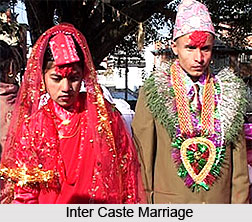India is the birthplace of Hinduism, Buddhism, Jainism and
Sikhism, collectively known as Indian religions. Indian religions, also known
as Dharmic religions, are a major form of world religions along with Abrahamic
ones. Today, Hinduism and Buddhism are the world's third- and fourth-largest
religions respectively, with over 1 billion followers altogether, and possibly
as many as 1.5 or 1.6 billion followers. Throughout India's history, religion
has been an important part of the country's culture. Religious diversity and
religious tolerance are both established in the country by the law and by
custom; the Constitution of India has declared the right to freedom of religion
to be a fundamental right.

Ancient history in India does lend considerable
and credible information regarding primeval communities, or organisations that
had cropped up since the times of pre-Christian era. Since the eras of Indus Valley Civilization and Harappa, the
concept of organising communities had been well assimilated within both
uneducated and educated classes. Religious, economic, administrational, and
even, societal classed communities had existed during ancient Indian
evolvement.
The
gigantic awareness of belonging to a higher caste or higher religious order
paved way for first ever establishment of Hindu religious
community, divided into Brahmins, Kshatriyas, Vaishyas and Shudras. These
four cardinal Hindu caste systems were further sub-divided into their own
specific community, a concept that is very much retained in present-day Indian
society. Some of the Hindu communities are Dewar Caste, Dhanuk Caste,
Dharkar, Dhuri Caste , Kayasth ,etc.
Dewar Caste :- Dewar
Caste is a Dravidian caste of musicians mainly inhabiting the central region of
the country. Dewar caste is said to be of a mixed origin. Dewar
is a Dravidian caste of Central India. The name of Dewar caste has been derived
from Devi, whom they religiously worship. Another version suggests that the
name is derived from the term 'Diabar', meaning a person who lights a lamp.
They are by profession musicians. The Dewars traces their origin from a Binjhia tribe named Gopal Rai.
Dhanuk Caste:- Dhanuk caste is considered as a prominent caste of
Bihar. They are also found in the adjoining state of Jharkhand. Dhanuk caste is
mainly the caste of agriculturists. The name of Dhanuk caste is derived from
the Sanskrit term 'dhanuska', which means an archer. This caste of India is
regarded as an ancient one because reference of its origin can also be found
in Padma Purana. Scholars are of the opinion that
formerly, Dhanuks were actively a part of the militia of the country. The
Dhanuks are minority indigenous people and they are also known as Rajbanshis.
Dharkar Caste:- Dharkar is a very low caste, which is much lower
than the Chamars but considerably above the Doms. Dharkars are workers in reeds
and canes. They manufacture cane stools and chairs, palm leaf fans, matting for
floors and the like. Some of the Dharkars are employed as porters.
Dhuri Caste :- Dhuri caste of Central India comprises members who are
mainly associated with the occupation of rice parching. They are considered as
an offshoot of Kahars. However, in Chhattisgarh Dhuris
claim that the Kahars are their sub-caste. In Kawardha, the members of Dhuri
caste believe that the Raja brought them back while on his return from a
pilgrimage. However, others say that they came from Mirzapur District in Uttar Pradesh. There
are some legends that indicate the origin of Dhuris.
Kayasth :- In the Puranas the Kayasth is mentioned as the Writer
caste. Their origin is not sure. The Kayasth themselves assert that their
common predecessor, on the father's side, was a Brahman.

.jpg)


.jpg)
